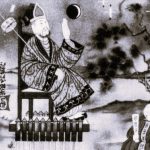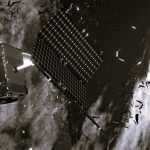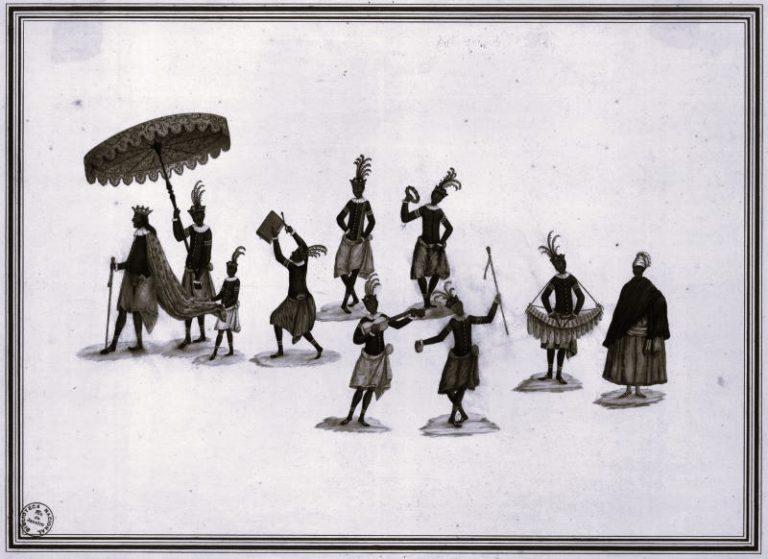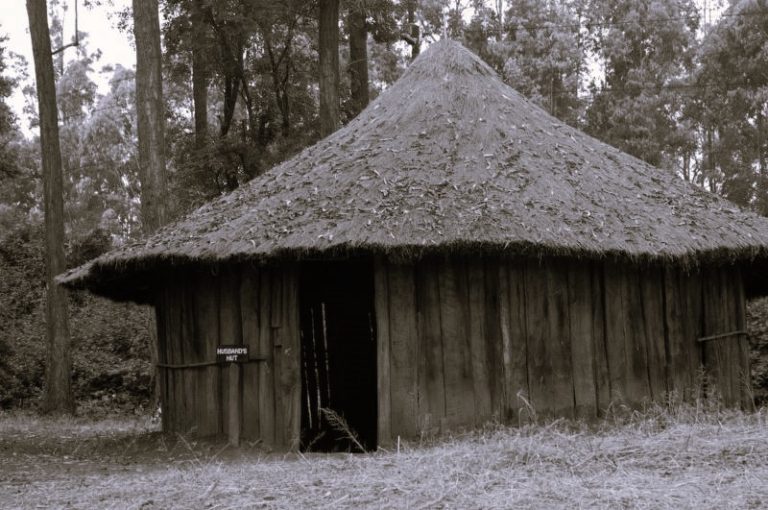

A fragile peace process seeks to bring stability to Central Africa, but its hard-won gains remain at risk.
Introduction
For two decades, the eastern provinces of the Democratic Republic of Congo (DRC) have been the epicenter of the deadliest conflict since World War II. Part of a vast country straddling the heart of Central Africa, the eastern Congo continues to defy efforts at pacification. As the conflict has morphed from a regional war to a series of tenacious local insurgencies, the civilians caught in the middle have paid the steepest price.
In addition to the ongoing humanitarian crisis, continued instability in sub-Saharan Africa’s largest country by area has strategic implications for the entire region. The DRC’s vast natural resources hold great potential but also complicate efforts at peace. The eastern Congo’s minerals power the world’s consumer electronics, and the country’s largely untapped farmlands have the potential to feed the rest of Africa. Yet disputes over these resources drive the conflict, and rebel groups seek to control them to fund their own campaigns.
Subject to foreign interference since the colonial era, the eastern Congo poses difficult questions about the role of international intervention. The UN mission—the largest peacekeeping deployment in the world until the one in South Sudan surpassed it in 2018—has provided crucial support for the DRC’s peace process, but many observers argue that it lacks a clear strategy for sustaining the peace and eradicating the plethora of armed groups that remain. With presidential elections originally scheduled for late 2016 delayed by two years, the Congolese government, Western policymakers, and regional leaders all face pivotal decisions that will determine whether the country can consolidate its democratic progress.
Death, Displacement, and Deprivation
The wars that have raged in and around the eastern Congo since 1994 have heaped by far the greatest suffering on the civilian populations caught in the crosshairs. The death toll in the country has topped 5.4 million, the vast majority of it in the east, while nearly three million people remain displaced and more than one million women and girls have been victims of rape. Soldiers killed in direct combat have, by many estimates, totaled less than 10 percent of the conflict’s overall deaths.
Nor have civilian casualties been simply an unfortunate byproduct of fighting. Rather, civilians have been targeted for supporting opposing rebel groups or for their ethnic identity. They have been robbed, displaced from their homes and villages, and pressed into service as slaves. Women have borne the brunt of sexual violence, wielded as a weapon of war. Driven from their homes, many have died from hunger and disease.
The Congo crisis has from the start been defined by mass displacement, which has strained the resources and organizational capacity of UN relief agencies, the Congolese government, and humanitarian nongovernmental organizations (NGOs). The conflict began when nearly two million Rwandans crossed into the eastern Congo in the wake of the 1994 genocide. The region has since become home to semipermanent tent cities housing many of the country’s 4.5 million internally displaced people, as well as hundreds of thousands of foreign refugees. For civilians, the choice has often been between languishing in overcrowded camps, fleeing into the region’s dense jungles to be exposed to roving militias, or, for refugees, returning to their country of origin and risking persecution.
The persistence of dozens of armed groups in the eastern Congo means that the death and disruption continue even as the ranks of the region’s major rebel organizations have shrunk. The largest remaining rebel army, the Rwandan Hutu Democratic Forces for the Liberation of Rwanda (FDLR, according to its French spelling), has been reduced to fewer than two thousand fighters, while most other groups number in the hundreds. These small and mobile guerrilla forces survive by avoiding direct confrontation with UN and government soldiers while continuing to terrorize villagers and exploit local resources.
Geopolitics of a Crisis
The Democratic Republic of Congo spans a territory nearly the size of Western Europe. Its borders defined by Belgian colonizers in 1885, the DRC is now home to more than seventy million people, making it the world’s most populous French-speaking country. In addition to colonial domination, regional powers—the DRC is surrounded by nine other nations—have repeatedly intervened in its internal affairs.
With the national capital, Kinshasa, located nearly one thousand miles from the major eastern cities of Goma, Bukavu, and Uvira, Congo has long defied easy governing. The hundreds of ethnic groups, myriad tribal languages, and divergent regional interests have proved fertile ground for recurring rebellions against the central government. In eastern Congo, conflict has centered on the North and South Kivu Provinces, as well as nearby Orientale, Maniema, and northern Katanga—an area roughly the size of California that counts more than twenty million residents. The region’s fertile highlands straddle the borders of Burundi, Rwanda, and Uganda, along the shores of Lake Kivu and Lake Tanganyika, and transportation between the west and east is arduous—most of the eastern cities can’t be reached by road from Kinshasa.

The easternmost provinces of the DRC—Ituri, Maniema, North and South Kivu, and Tanganyika—have borne the brunt of the region’s ongoing insurgencies. Deposits of the country’s so-called “conflict minerals”—gold, tungsten, tantalum, and tin—are also concentrated here. As a result, these provinces continue to see the most violence and host the highest concentration of vulnerable populations.
North and South Kivu, along the border with Rwanda, have seen multiple invasions and refugee flows from Rwanda and Uganda, making the region the epicenter of the conflict. Today the Kivus host most of the remaining armed groups, both domestic and foreign, as well as the largest populations of displaced civilians.
The primary contingent of UN peacekeepers and more than one hundred humanitarian aid organizations are based in Goma, capital of North Kivu and the largest city in the eastern Congo. The rebel group M23 occupied the city in 2012–2013.
Violence in eastern Congo has its roots in ethnic conflict dating back to the colonial era, which was then aggravated under the thirty-year dictatorship of Mobutu Sese Seko, which began in 1965. The horrific scale of the recent fighting grew out of events beginning in 1994. That year, the genocide of nearly one million Rwandan Tutsis sparked a regional conflagration that came to be known as the “African World War.” After many Hutu genocidaires fled to eastern Congo and threatened incursions back into Rwanda, the Tutsi government of Rwanda led a retaliatory invasion in 1996 that would eventually entangle nearly all of Congo’s neighbors. Sweeping from east to west, Rwandan forces, together with their regional partners and Congolese allies, overthrew Mobutu and installed a new government under Laurent Kabila.
The alliance broke down in 1998 when the new government in Kinshasa turned against Rwanda, ordering Rwandan and other foreign forces out of the country. Regional rebellions emerged, fracturing the country, and local militias sprouted up. Neighboring countries, divided between those supporting and those opposed to the Kinshasa government, once again invaded.
After several partial agreements, a 2003 peace deal pacified the west, but fighting in eastern Congo continued. Pro-Rwanda rebels from the Congolese Tutsi, or Banyamulenge, populations concentrated in the Kivus clashed with the FDLR, the Rwandan Hutu militia tied to the 1994 genocide, as well as with government soldiers. Other rebel groups, such as the Ugandan Allied Democratic Forces (ADF), have been a target of the UN peacekeeping mission, MONUSCO, for years. The ADF, a small but potent force ensconced in the Rwenzori Mountains on the border with Uganda, has remained a threat and is suspected of carrying out deadly attacks in 2017 and 2018. Meanwhile, a multitude of ethnically based local militias, known as the Mai Mai, have added to the chaos with their opaque networks of shifting alliances.
Armed Ethnic Groups in Eastern Congo

Congolese Armed Forces (FARDC)
The Armed Forces of the Democratic Republic of the Congo (FARDC), the most recent manifestation of the country’s unified military, was created as part of the transitional peace process that began in 2003. The FARDC has struggled to incorporate the armed groups that agreed to halt their rebellions. Since 2007 it has worked with UN peacekeepers to fight mutinies led by Tutsi commanders in addition to battling the Rwandan Hutu FDLR militia. However, the FARDC remains highly fractured by geographic and ethnic identity and many of its nearly sixty thousand soldiers deployed in the east have been responsible for atrocities and the abuse of civilians.
United Nations Forces (MONUSCO)
The United Nations mission now numbers over twenty-two thousand personnel. Initially limited to observing the 1999 cease-fire, UN forces became more deeply involved with supporting the national armed forces against rebels in the eastern provinces after the 2006 elections. In 2013 a special African-led UN intervention brigade received a mandate to undertake offensive action against the Rwandan-backed M23 rebellion. Working with the FARDC, the brigade defeated the M23 later that year. But further collaboration against rebel groups, especially the Hutu FDLR, has stalled as President Kabila has sought to reduce the UN’s role.
Rwandan Hutu Rebels (FDLR)
Ethnic Hutu fighters from Rwanda have been operating in eastern Congo since 1994, following the Rwandan genocide. When Rwanda’s Paul Kagame overthrew the Hutu-led government that had fomented the genocide, tens of thousands of former Rwandan army soldiers (as well as the paramilitary group largely responsible for the genocide) fled into eastern Congo. They created the Democratic Forces for the Liberation of Rwanda (FDLR), which has weathered campaigns by the DRC government, UN forces, and Rwandan intervention. Although reduced to some two thousand fighters, the FDLR remains the largest rebel force in the region.
Tutsi Rebels (M23—Defeated)
From 1996 to 2013, some form of Tutsi rebellion had been operating in the eastern Congo. After 1998 this included first the Rwanda-backed Congolese Rally for Democracy and then the National Congress for the Defense of the People (CNDP). In 2012 dissatisfied CNDP officers spurned a peace deal to launch yet another rebellion, known as the M23. With the help of the UN’s intervention brigade, the government defeated the M23 in 2013. However, efforts to reintegrate its soldiers into the national army have faltered and many M23 fighters remain in Rwanda and Uganda—a situation UN officials call “a time bomb.”
Ugandan Rebel Groups
Two Ugandan armed groups have operated out of the eastern Congo, terrorizing local civilians as well as launching attacks into Uganda and other countries. One of them, the Allied Democratic Forces (ADF), is a small Islamic militia founded in 1998 that seeks to overthrow Yoweri Museveni’s government in Uganda. Similarly, the Lord’s Resistance Army (LRA), led by the charismatic Joseph Kony, was created in 1998 in opposition to Museveni’s rule. Since 2011, a small contingent of U.S. military advisers has assisted Ugandan and Congolese forces in the region in defeating the LRA.
Government of Rwanda
Rwanda’s Tutsi government, led by Paul Kagame, has been involved in the conflict in the eastern Congo for the past two decades. After invading the DRC twice in the course of the war that officially ended in 2003, Rwanda continued backing Tutsi rebels over the following decade. In 2012 the UN found Rwanda was supporting the M23 rebellion, leading the United States to suspend military assistance. The resulting acquiescence of Rwanda and Uganda to a renewed peace process helped defeat the M23, although the rebellion’s former fighters continue to take refuge in both countries.
Government of Uganda
Uganda has taken part in fighting in the eastern Congo since 1996. Ugandan President Yuweri Museveni was a close ally of Rwanda’s Paul Kagame and assisted Rwanda in its 1996 and 1998 campaigns against the Congolese government. In 2012 the United Nations found Uganda responsible for supporting the M23 rebellion in the eastern Congo. While M23’s 2013 defeat ended Uganda’s involvement, most of the M23 fighters fled to Uganda and Rwanda, sparking concerns that they could be regrouping.
Mai Mai Militias
Mai Mai is a blanket term for dozens of local militias that have sprouted up throughout the DRC in response to foreign intervention. The Mai Mai are generally small and tribally based, seeing themselves as defending their particular ethnic community. Originally formed in opposition to the Rwandan invasions of 1996 and 1998, the Mai Mai’s allegiances have since splintered, with some supporting the Congolese government, some fighting both the government and UN peacekeepers, and many operating as self-interested armed gangs that continue to terrorize civilians.
Conflict Economies

Decades of war and mismanagement have ravaged the DRC’s overall productive capacity. Despite having some of the world’s most valuable mineral deposits, Africa’s greatest hydropower potential, and vast expanses of fertile farmland, the country’s people live on an average of less than $500 a year. Even with impressive growth rates of over 9 percent in 2014 and 2015, economic progress faltered in 2016 and has not translated into broader prosperity in eastern Congo. Unemployment remains above 50 percent, with levels even higher among the young and in the eastern provinces where much of the conflict is centered.
The DRC’s crumbling infrastructure, too, limits economic activity and hobbles the central government’s efforts to defeat rebel groups. Internal commerce is greatly constrained and electricity is scarce, with less than 10 percent of citizens able to reliably access power.

Many in the east are thus left to fend for themselves, both economically and militarily. The resulting proliferation of militias has become deeply intertwined with local economies. The so-called conflict mineral trade has received particular attention due to the many mines that have come under the control of rebel groups and the importance of several of those minerals in cell phones and other consumer electronics. Informal, or “artisanal,” mining constitutes as much as one-fifth of the country’s economic output and employs millions of people in eastern Congo. It is a ready source of income for rebels and corrupt government soldiers alike, as well as for traders from neighboring countries operating directly or through local armed allies.

Still, many experts say that mining is only one catalyst for the ongoing conflict. Some regional analysts argue that eastern Congo is a “fully militarized” economy, with armed groups participating in every sector and able to leverage almost any valuable resource. Clashes over access to eastern Congo’s fertile land, in particular, stretch back decades and in some cases centuries. Ethnic Tutsis originally from Rwanda have long fought with other groups over property and citizenship rights in the region. Even today many of the ongoing armed conflicts between villages and ethnic clans trace their origins to these disputes—and the advent of modern weaponry has led to increasing humanitarian costs.
As the central government attempts to resolve these conflicts and bring development to the east, it remains weak and highly dependent on outside support. The progress that has been made in pacifying some areas has been underwritten by a UN peacekeeping mission costing more than one billion dollars per year. Foreign donors also supply about a quarter of Kinshasa’s total budget. It will likely fall to them to fund the national general election, the costs of which will likely exceed one billion dollars.
Outside Forces
The Democratic Republic of the Congo won independence from decades of Belgian rule in 1960, but that did not mean the end of outside interference in its affairs. The country almost immediately became mired in Cold War geopolitics, with the United States supporting the thirty-year rule of anti-Communist dictator Mobutu Sese Seko. Under Mobutu, a declining economy, decaying infrastructure, and the deterioration of the armed forces combined to produce a weak state increasingly unable to govern and defend its own territory.
By the 1990s, tensions with Rwanda and internal instability in neighboring countries led to an “African World War” in the DRC that involved nine countries. Since Rwanda’s civil war between Hutus and Tutsis spilled over into eastern Congo in 1994, Rwanda’s Tutsi-led government has repeatedly intervened, sending its own troops into the region and offering logistical support to its Congolese allies. Uganda, too, played a major role, with its troops first supporting and then falling out with Rwandan forces in eastern Congolese territory. Other countries in the region, including Angola, Burundi, and Zimbabwe, have been drawn into the conflict at different stages.
Outside parties have also stepped in as peacemakers. The peace process that culminated in a 2003 transitional government was hosted by then–South African President Thabo Mbeki. The United Nations deployed the UN Organization Mission in the Congo (MONUC, later renamed MONUSCO), the largest and most expensive peacekeeping mission in its history, first to facilitate democratic elections and later to take the offensive against rebel groups.
After the emergence of yet another Rwanda-backed rebel group, the M23, in 2013, the United States led a new regional peace process, which brought together the African Union, the European Union, and the United Nations. Pursued in coordination with the International Conference of the Great Lakes Region (ICGLR), a grouping of Central African governments, these talks resulted in the Nairobi Declaration of December 2013. The declaration laid out a program for disarming the M23, demobilizing its fighters, and holding its leaders accountable.
All of these efforts have contributed to the tentative progress that has taken hold in eastern Congo. None, however, have so far proved capable of ending once and for all the cycle of bloody insurgency.
Decision Points
Overview
As the Congolese government continues to pursue the remnants of rebel forces in the east, the country remains fragile. Progress—economic, military, and political—is real, but far from steady. Underlying issues, such as land rights, citizenship, and power sharing, remain unresolved as elections loom. The choices made by politicians, soldiers, and business leaders in the months and years to come will likely set the trajectory of eastern Congo for decades. Hanging over eastern Congo’s future is the specter of renewed ethnic and communal violence and another generation of children lost to the ravages of disease, slavery, and war.
Developments in the following areas will be crucial:
2018 Elections

A presidential election is scheduled for December 23, 2018, two years after Joseph Kabila’s mandate ended. Kabila, in power since 2001 and constitutionally barred from running for a third term, announced in August that he would not stand for reelection, and his ruling coalition nominated former Interior Minister Emmanuel Ramazani Shadary as its candidate. Many in the DRC, including some of Kabila’s own political allies, had accused him of delaying elections to create glissement, or electoral slippage, to extend his stay in office. Opposition groups agreed to put forth businessman Martin Fayulu as their candidate, but their united front fractured within hours. In all, some two dozen candidates are challenging Ramazani. The electoral commission barred several major opposition figures, including Jean-Pierre Bemba and Moise Katumbi, from running.
The electoral process will have serious repercussions for the authority of the central government, in particular in the eastern provinces. A peaceful, democratic transition would be a watershed moment for Congolese institutions. The possibility of renewed insurgency remains, however, especially if Congolese view the victor as illegitimate. Moreover, any resulting political chaos could encourage the DRC’s neighbors to once again attempt to exert influence through proxy forces.
Conflict Minerals

The informal mining industry in eastern Congo is in many places interwoven with the region’s armed groups. Some experts have argued that restricting these minerals from international markets could help smother the conflict. U.S. policymakers have sought to impose such restrictions through Section 1502 of the 2010 Dodd-Frank financial reform legislation, which requires publicly traded companies to disclose whether their products are “conflict free.” A similar European Union law, which was passed in 2017 and will take effect in 2021, requires companies to perform due diligence, including third-party audits, to confirm that their supply chains do not contribute to the fighting.
However, some experts believe that such regulations will prove to be counterproductive to the goal of developing eastern Congo, arguing that the rules have contributed to putting millions of miners out of work. Other observers argue that armed groups are able to easily turn to other natural resources, such as timber and charcoal, or to drug smuggling, in the face of pressure. former U.S. President Donald J. Trump threatened to suspend the Dodd-Frank provision, citing harm to the livelihoods of Congolese.
Regional Relations

Since 1994, the fate of eastern Congo has turned largely on the actions of neighboring Rwanda. It has repeatedly intervened in the DRC, directly or through its proxies, in the name of defending itself from the Hutu genocidaires based there. The most recent proxy war, in 2013, was only brought to an end through U.S. pressure on the Rwandan government and a regional peace process aimed at reducing foreign interference in eastern Congo.
A resolution of the conflict will hinge in large part on the ability of Rwanda and the DRC to forge constructive relations. Rwanda has stepped back from direct intervention, but its leaders allege that the Congolese government is unwilling to finally defeat the Hutu FDLR forces that have lingered in the region since 1994. This could potentially spark another round of escalation. The creation of more legitimate and transparent economic ties between eastern Congo and its neighbors could bring local trading relationships out of the shadows and reduce the control of warlords over resources.
Disarmament, Demobilization, and Reintegration

A major challenge to peace has been the DRC’s faltering efforts to demobilize thousands of rebel fighters, whether by incorporating them into the national army or smoothing their transition into civilian life. Former rebels have repeatedly launched rebellions from within the military, including General Laurent Nkunda’s 2004 mutiny and General Bosco Ntaganda’s 2012 M23 uprising. This cycle has led some experts to decry the “revolving door” of the disarmament, demobilization, and reintegration (DDR) process.
With the defeat of M23 and the ongoing campaign against the FDLR, the most recent DDR effort will require the Congolese government to manage more than eleven thousand ex-combatants. In addition to being disarmed and vetted for human rights violations, these ex-fighters will require job training and other economic support, which will likely cost more than $100 million. Without progress, fighters like them could decide it is in their interest to return to the battlefield.
International Actors

The United States is DRC’s largest bilateral donor and the largest financial contributor to MONUSCO, providing a quarter of the total UN peacekeeping budget. President Barack Obama’s administration raised the profile of the DRC in U.S. diplomacy by appointing former Senator Russell Feingold as special envoy to the Great Lakes region in 2013. In this role, Feingold brokered a regional peace agreement, including a framework for coordination with the African Union, the European Union, and the United Nations, and for the first time China was welcomed to multilateral discussions. In late 2018, President Trump appointed career diplomat Michael A. Hammer the U.S. ambassador to the DRC and named J. Peter Pham the next Great Lakes envoy.
At the same time, the UN mission has scaled back, dropping three thousand personnel between 2016 and 2018 as the Trump administration pushed for major cuts to the UN budget. The intervention brigade created in 2013 helped the Congolese army successfully defeat the M23 rebellion. But a planned joint UN-Congolese offensive against the remaining Hutu FDLR rebels fell apart in early 2015 over UN criticism of human rights abuses committed by the Congolese army. Concerns that Kinshasa is not committed to defeating the FDLR have persisted, and Kabila renewed calls for MONUSCO’s withdrawal in his 2018 address to the UN General Assembly.
Originally published by the Council on Foreign Relations, 12.2018, under the terms a Creative Commons Attribution-NonCommercial-NoDerivatives 4.0 International license.






